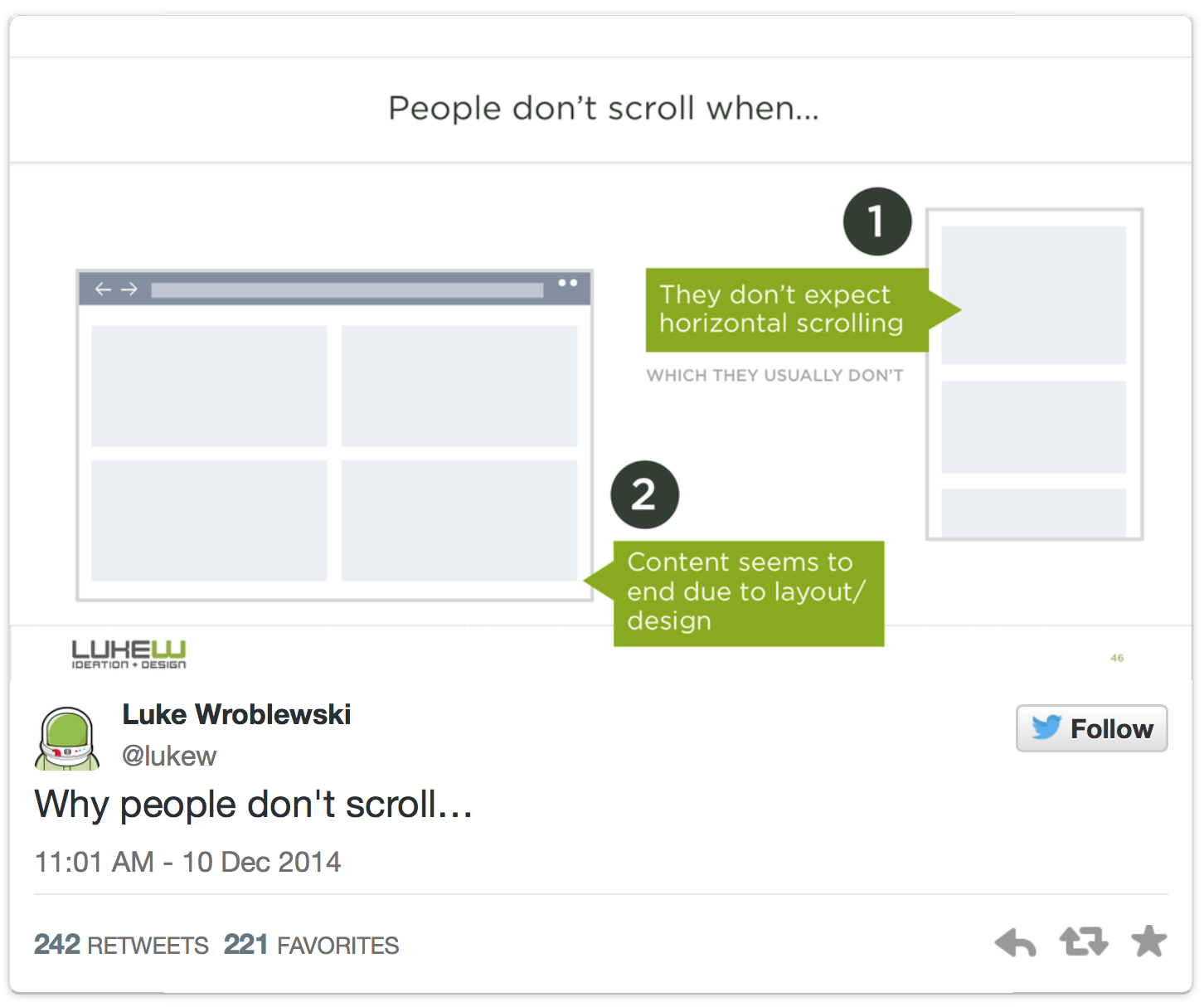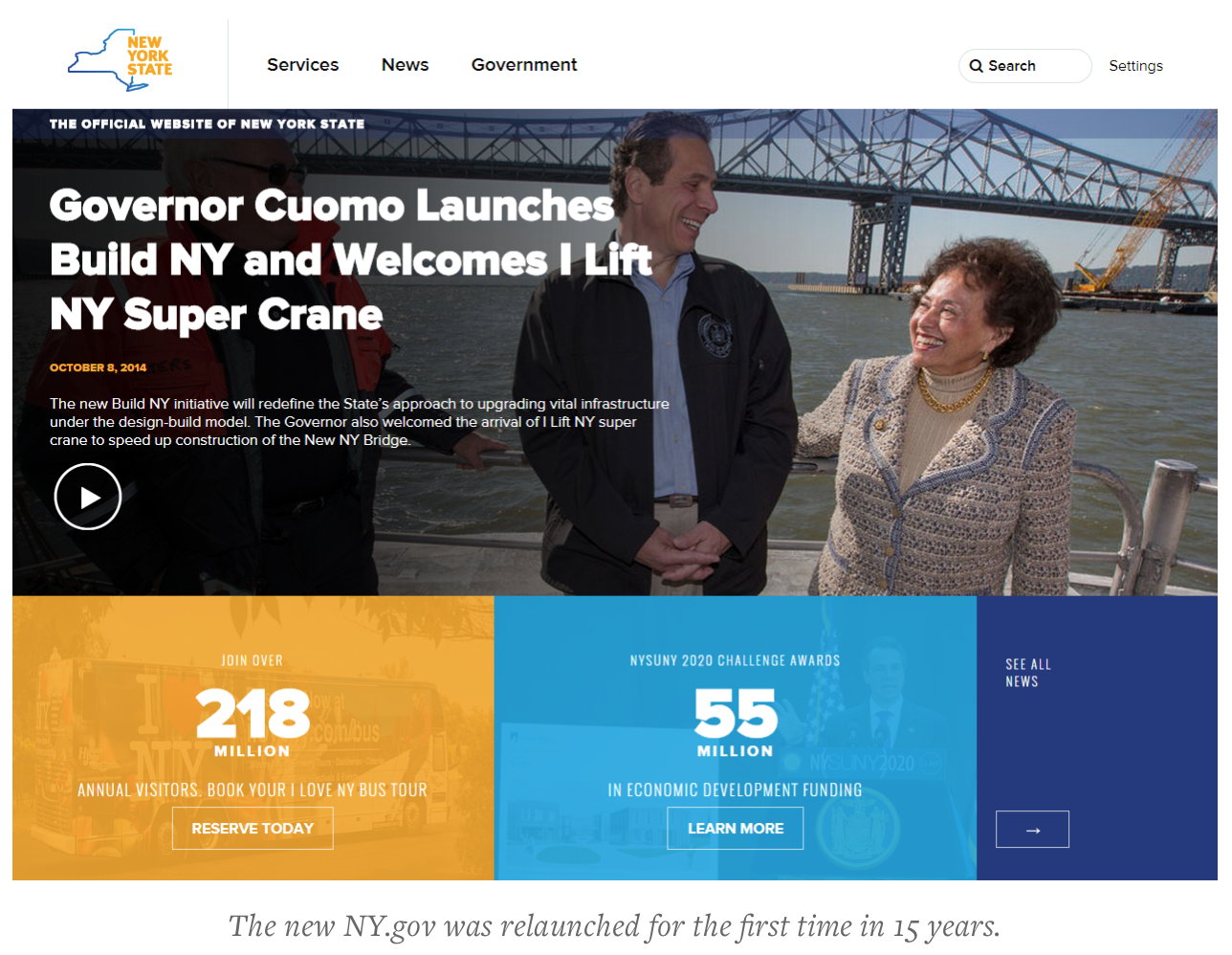Good checklist to check UX, interactions.
Category: Usability
styleguides.io: Website Style Guide Resources
Excellent list of links – comparisons, boilerplate, tearsheets.
What it takes to be a lead designer at a top startup
Build a Design Culture
Top startups are now also looking for their designers to help build a company culture that values design. This means producing a well designed product, helping other employees understand and respect design, and can even extend to designing the physical office space. To build this culture designers must:
Be Collaborative and Inclusive
Though going off to a private space and designing a perfect solution is romantic and sometimes necessary it rarely raises the design IQ of an organization. To do this designers need to find opportunities to be collaborative and inclusive where possible.
One great example is a design team that printed up their design mocks and gave out chocolate in return for feedback. This approach ended up getting them insights from unexpected places like finance and legal, and got many people in the company behind what they were building.
Be a design evangelist
Great designers at top startups also do a great job of evangelizing design to help people understand how to work with design and the impact it design can have. At Coursera, the Director of Design uses “All Hands” meetings to talk about product design and what the design team is working on to the entire company. This has helped increase company understanding of how design helps the business and has increased the number of people that seek to collaborate with design as a strategic partner.
Be a design educator
Finally great designers educate others on design. At Facebook, Mark would often walk over to me and ask me to adjust spacing, margins, color, etc. while I was designing. Instead of turning inward and getting frustrated I would use these opportunities to educate him on design and why I made specific decisions. The result has been that Mark’s design IQ is now extremely high and it’s because many designers used interactions with him as design education opportunities.
Treat Prototyping as Design
As more design moves to mobile devices designers must think along a time dimension. This means photoshop or sketch alone won’t produce the deliverables you need to communicate the work. In this new reality, prototyping is designing.
UX for the Enterprise
Enterprise UX is often about solving ancillary problems by creating tools that facilitate an organization’s primary goals. These problems are rarely as compelling or visible as the goals they support, but they’re just as necessary to solve. A company might build the best-designed cars in the world, but it won’t matter if its quality-assurance process is hobbled by unusable software. Good design enables enterprises to do the work they were founded to do.
Enterprise employees are also consumers, and they’ve come to expect consumer-level design in all the tools they use. Why shouldn’t a company’s inventory software or HR portal be as polished as Evernote, Pinterest, or Instagram? When a consumer app is poorly designed, the user can delete it. When an enterprise app is poorly designed, its users are stuck with it.
The stakes can be enormously high. The sheer scale of enterprise clients magnifies the effects of good and bad design alike. Small inefficiencies in large organizations result in extra costs that are passed on to the end user in time spent, money lost, and frustration increased. Likewise, when an enterprise prioritizes user experience for its internal tools, it becomes a more effective organization; a recently released business index shows that design-driven companies outperformed the S&P average by 228% over the last ten years.
DESIGN FOR THE END USER, NOT THE CLIENT
As with many design jobs, the end users of your software probably aren’t the same people who commissioned it.
In large organizations, the divide between the user and the client can be vast. The director of operations might commission an inventory app for warehouse personnel, or someone from IT might commission a reporting tool for the sales team. In an enterprise-scale bureaucracy, the clients in charge of UX projects are often in higher-level management roles. And while they typically have an invaluable grasp of the big picture, they may not completely realize the everyday needs of the people who will use the software.
A successful enterprise UX project considers the users’ needs, the clients’ goals, and the organization’s priorities. The best user experience sits at the intersection of these concerns.
Calculating ROI on UX & Usability Projects
ROI is always calculated in terms of increase or decrease of a key variable.
These increases and decreases usually fall into one of six categories:
- Increased sales
- Increased productivity
- Increased customer satisfaction and loyalty
- Decreased training and support costs
- Decreased development time and costs
- Decreased maintenance costs – A hallmark of good UX is the elimination of unnecessary or marginal features. This reduces the complexity of the code base, making it more robust and less buggy. As a wise man once said, “there are no bugs in the code you don’t write.”
UX BS Generator
The UX guru says…
There Is No Fold
Luke Wroblewski went on a pretty great twitter tear debunking the persistent myth of “the fold” in contemporary (read: multi-device) web design. For posterity, here are all of the tweets including links to the sources.
Pixelapse
Enhancing User Experience With The Web Speech API
It’s an exciting time for web APIs, and one to watch out for is the Web Speech API. It enables websites and web apps not only to speak to you, but to listen, too. It’s still early days, but this functionality is set to open a whole array of use cases. I’d say that’s pretty awesome.
In this article, we’ll look at the technology and its proposed usage, as well as some great examples of how it can be used to enhance the user experience.
Disclaimer: This technology is pretty cutting-edge, and the specification is currently with the W3C as an “unofficial editor’s draft” (as of 6 June 2014). The likelihood that usage will differ slightly from the code snippets in this article is high. Checking the specification and testing thoroughly before releasing code are always wise.


